I had this post all specially planned for 21 May 2011 and now you tell me today has nothing to do with ruptures? Honestly, I don’t know why I bother.
Well, I might as well post it anyway – I get the feeling not many Quack Doctor readers will be going to heaven any time soon, so you’ll need something to peruse as you while away the Tribulation.
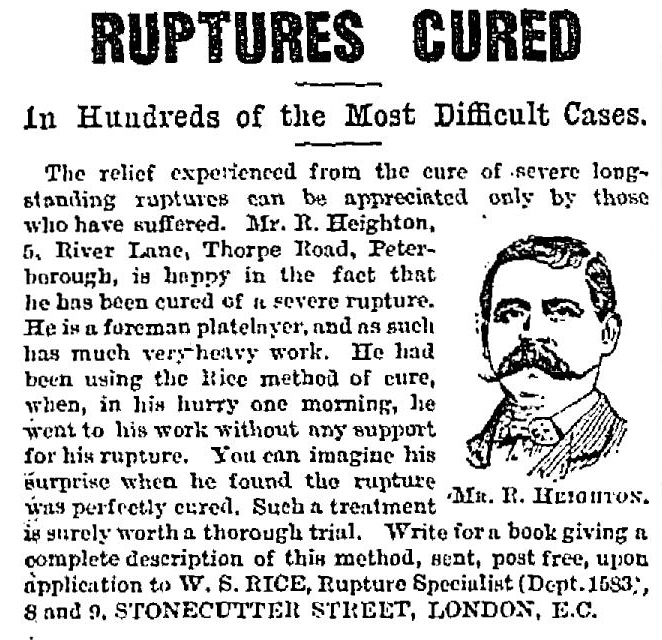
When the W. S. Rice Rupture Cure arrived on the market in the late Victorian period, traditional rupture trusses had been around for centuries, and were constantly being re-invented in the hope of improving them. Many severe-looking designs – like the American one pictured below – jostled for supremacy, so to stand out from the crowd, new products had to offer something different.
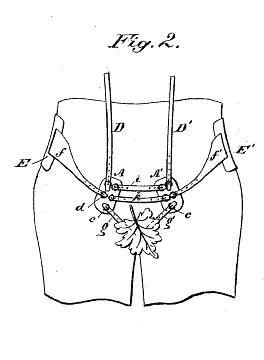
The Rice Method offered to cure, rather than simply support, ruptures. And if you had a hernia, I would imagine absolutely anything that might get rid of it would have been worth a go. Although the Rice method included an ‘appliance’ for temporary use, the lasting cure would be performed by a liniment called Developing Lymphol. Twice a day the patient had to remove the appliance, sprinkle some Lymphol onto the rupture and rub it in thoroughly. This must have been pretty empowering for people otherwise faced with the grim prospect of indefinite truss-wearing.
The Lymphol comprised essential oils of origanum, spearmint and peppermint, with tincture of capsicum and red dye, all padded out by rectified spirit. Its accompanying appliance was described by the BMJ in 1908 as ‘an elastic band to go round the body, fitted with an adjustable pad and an understrap.’
Rice was London-based but advertised the product widely in the US, Canada, Australia and New Zealand. Representatives travelled around offering free trials where sufferers could have the method ‘demonstrated to you right on your own rupture.’
‘Are you tired of that binding, hampering, uncomfortable old truss?’ asked one of Rice’s 1920s advertisements before exhorting the reader to come along to a demo. ‘[The Rice Method] is modern, up-to-the-minute, abreast of the latest scientific developments. It is the one Rupture Method you are not asked to take on faith alone—’
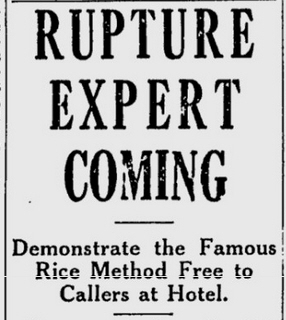
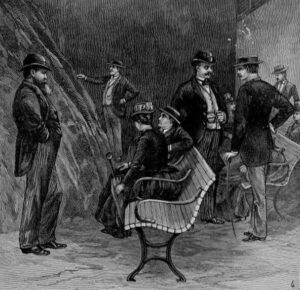
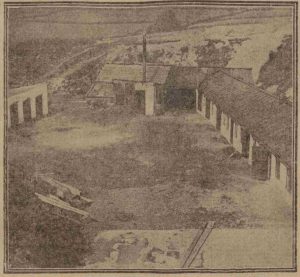
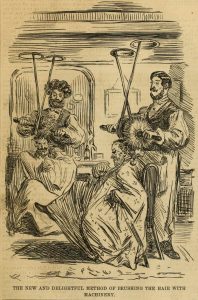
2 thoughts on “Dr W. S. Rice’s Rupture Method”
Comments are closed.